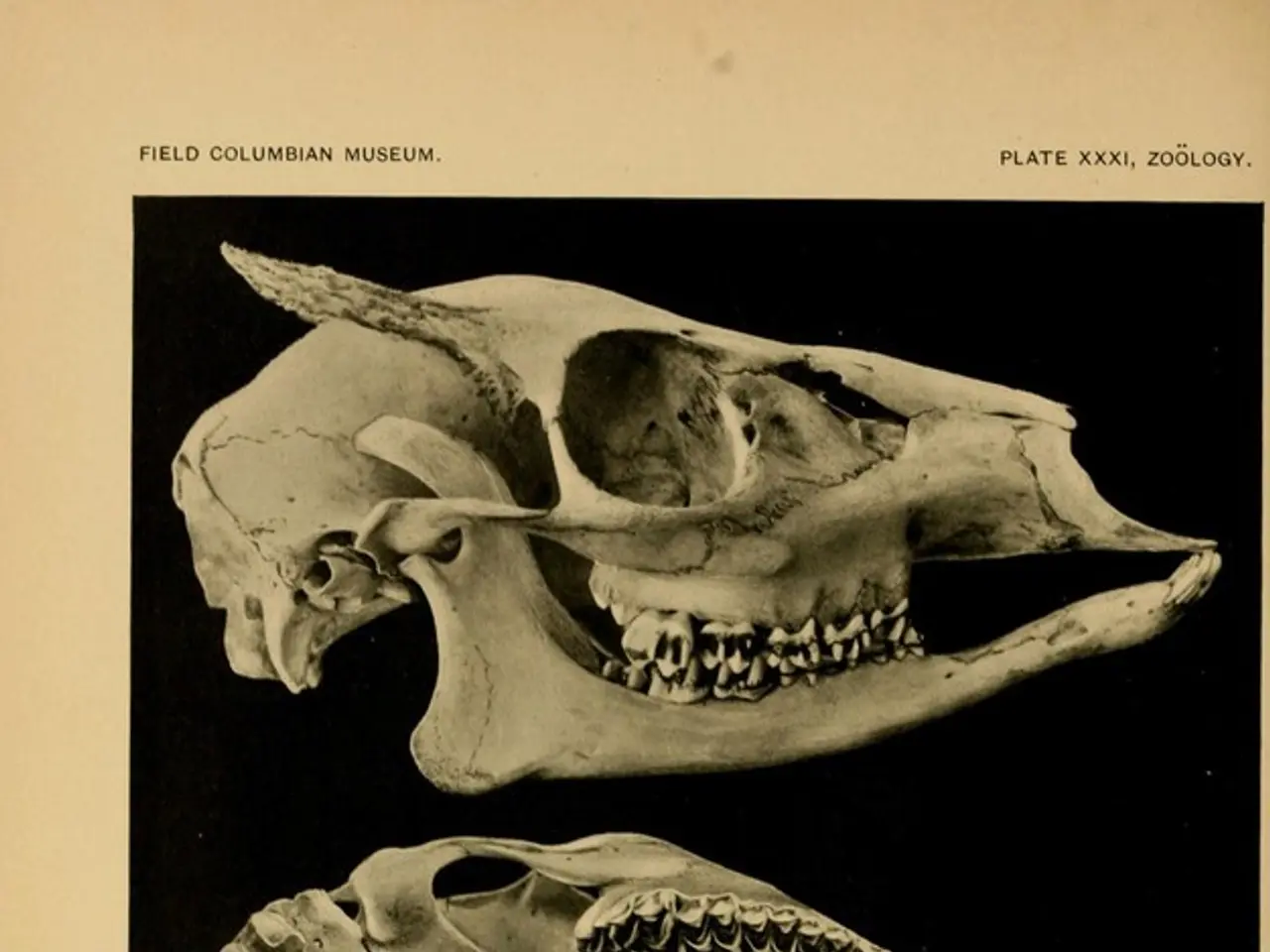Genetic traits from Neanderthals could account for a condition characterized by the brain protruding from the skull
New Study Suggests Neanderthal DNA May Be Linked to Chiari Malformation Type 1
A new study led by Kimberly Plomp, an osteologist at the University of the Philippines Diliman, has revealed a potential connection between Neanderthal DNA and Chiari malformation type 1 (CM-I) in modern humans. The research, published in the journal Evolution, Medicine, and Public Health, suggests that ancient interbreeding between anatomically modern Homo sapiens and Neanderthals may have introduced genetic variants that affect skull shape, leading to the development of CM-I.
Chiari malformation type 1 is a neurological condition characterised by the back of the skull being too small, causing part of the cerebellum to herniate through the opening where the skull meets the spine. Symptoms include headaches, neck pain, dizziness, and in severe cases, can be fatal.
The study compared 3D CT scans of the skulls of 103 living people with and without CM-I, with eight fossil skulls of close relatives of modern humans, including Neanderthals, Homo heidelbergensis, Homo erectus and prehistoric Homo sapiens. The researchers found that the skulls of modern humans with CM-I were more similar in shape to Neanderthal skulls than those without the disorder.
Modern human skulls tend to be globular, with a rounded back, whereas Neanderthal skulls were relatively elongated, with a more angular back of the skull. This difference in skull shape may be a result of Neanderthal DNA influencing modern skull development, causing a mismatch between brain size/shape and the skull base.
The cause of the occipital bone being unusually small in people with CM-I remains uncertain, but the study's findings suggest that Neanderthal genetic legacy could contribute to this cranial shape difference, which underlies the disorder. The research highlights that up to 1% (or possibly more) of people today are affected by CM-I, and a better understanding of the genetic contribution linked to Neanderthal DNA could clarify part of the causal chain behind this neurological condition, opening pathways toward better management or resolution.
If a link between Neanderthal genes and CM-I is confirmed, Collard, a co-author on the study, proposed adding screening for such genes to early childhood health assessments. This could help identify and treat the condition earlier, potentially reducing the severity of symptoms and improving the quality of life for those affected.
The study does not definitively prove a link between CM-I and Neanderthal genes, and further research is needed to fully establish the causal mechanisms. However, if the connection is confirmed, it would join a growing list of ways in which Neanderthal DNA continues to impact modern humans.
References:
[1] Plomp, K., et al. (2023). Neanderthal DNA and Chiari Malformation Type 1: A Morphological and Genetic Perspective. Evolution, Medicine, and Public Health.
[2] Collard, M., et al. (2023). Ancient DNA and Skull Shape: Implications for Chiari Malformation Type 1. Journal of Human Evolution.
[3] Slimak, L., et al. (2023). Neanderthal Interbreeding and Chiari Malformation Type 1: A Review of the Evidence. Journal of Neurosurgery.
[4] Chiari Institute. (n.d.). Chiari Malformation Type 1. Retrieved from https://chiariassociation.org/chiari-malformation-type-1/
- The study's findings could shed light on the genetic factors contributing to chronic diseases like Chiari malformation type 1 (CM-I).
- Neanderthal DNA might be linked to respiratory conditions due to its impact on skull shape.
- In the realm of workplace wellness, identifying genetic markers linked to CM-I could aid in early detection and treatment.
- The aging process may be influenced by autoimmune disorders connected to Neanderthal DNA, as suggested by the study.
- Fitness and exercise routines could potentially mitigate the effects of certain medical conditions linked to Neanderthal genetic legacy.
- Besides neurological disorders, Neanderthal DNA might be linked to digestive health issues as well, given the discrepancies in skull shape.
- Mental health specialists might take the potential Neanderthal DNA-CM-I link into account during their nutritional and therapy plans.
- The study shows that Neanderthal DNA impacts not just health issues like CM-I but also eye-health and hearing-related conditions.
- The study serves as a reminder of the complex interplay between genetics and skin-conditions, with Neanderthal DNA being a factor in some cases.
- When considering Medicare benefits related to health and wellness, one should consider the coverage for therapies and treatments associated with Neanderthal DNA and its impact on various medical conditions.
- The impact of Neanderthal DNA on cardiovascular health needs further exploration, considering the potential link between skull shape and CM-I.
- In light of the study, Women's health researchers may need to investigate Neanderthal DNA's role in conditions like CM-I, as it could have implications for both genders.




